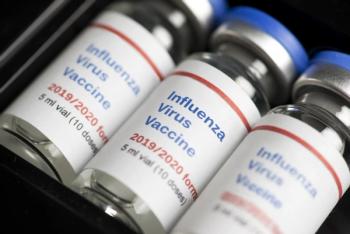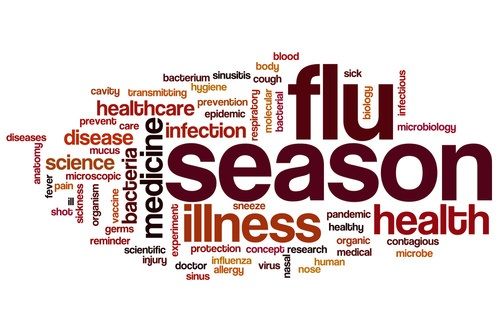
Influenza
Latest News
Latest Videos
CME Content
More News

A model including clinical symptom reports, Internet searches, and emergency room data predict influenza hospitalizations better in affluent vs. poorer communities.

New study findings shed light on the positive effects of baloxavir for preventing influenza spread in household settings.

With the current COVID-19 outbreak, new data about Influenza mortality related to spectator sports should make the professional leagues and fans pause about attending games.

Baloxavir marboxil showed superiority over placebo and similar efficacy to oseltamir in reducing influenza symptoms.

While COVID-19 may have impacted flu-like illness reporting, the CDC estimates there were between 24,000-62,000 related deaths this year.

Experts argue that though public officials may liken coronavirus to "just another flu," the true numbers show a stark difference.

It is known that the type of respiratory specimen, sampling environmental factors, and time from symptom onset impact the sensitivity of rapid influenza diagnostic tests.

Flu burden for children can be reduced by improving adherence to a 2-dose series of flu vaccinations.

A team of investigators lay out 3 scenarios for the global pandemic duration—based on previous pandemic learning and public health adherence.

As the influenza season for 2019-20 comes to a close, Contagion® has the latest on baloxavir and what other infections adults with the flu may have.

Investigators performed avian influenza surveillance in wild bird gatherings across China between 2017 through 2019, isolating and exploring the biological characteristics of 2 different H16N3 subtype influenza viruses.

CDC investigators believe they have determined the cause for influenza vaccine effectiveness decline.

Learn what Cidara Therapeutics has in development in this episode of Contagion® Connect.

Tina Q. Tan, MD, discusses vaccine misinformation.

Tina Q. Tan, MD, discusses the particular severity of the ongoing flu season.

The FLU-v experimental vaccine designed to protect across influenza strains showed promising results in a recent clinical trial.

A new influenza vaccine, the global burden of the flu in children, and the CDC’s latest numbers on the flu disease dominates the flu update this month.

With community-acquired pneumonia (CAP), the numbers tell the story.

The influenza hospitalization rate for children and young adults has surpassed the rate documented during the second wave of the 2009 H1N1 pandemic.

Jason Gallagher, PharmD, discusses the risk factors for experiencing complications of influenza.

Influenza-associated hospitalization rates among children and young adults are considered higher than recent flu seasons.

Based on data from 4112 children and adults, vaccine effectiveness was estimated to be 37% against influenza A and 50% against influenza B viruses.

The US Food and Drug Administration approved the first adjuvanted quadrivalent influenza vaccine for adults 65 years and older.

Just as influenza season started ramping up in the Northern Hemisphere, news hit the wire that Sanofi had secured over-the-counter rights for oseltamivir (Tamiflu).

Investigators recently mapped out influenza and pneumonia cases among residents of long-term care facilities. They found distinct regional variations.






















































































































































































































































































